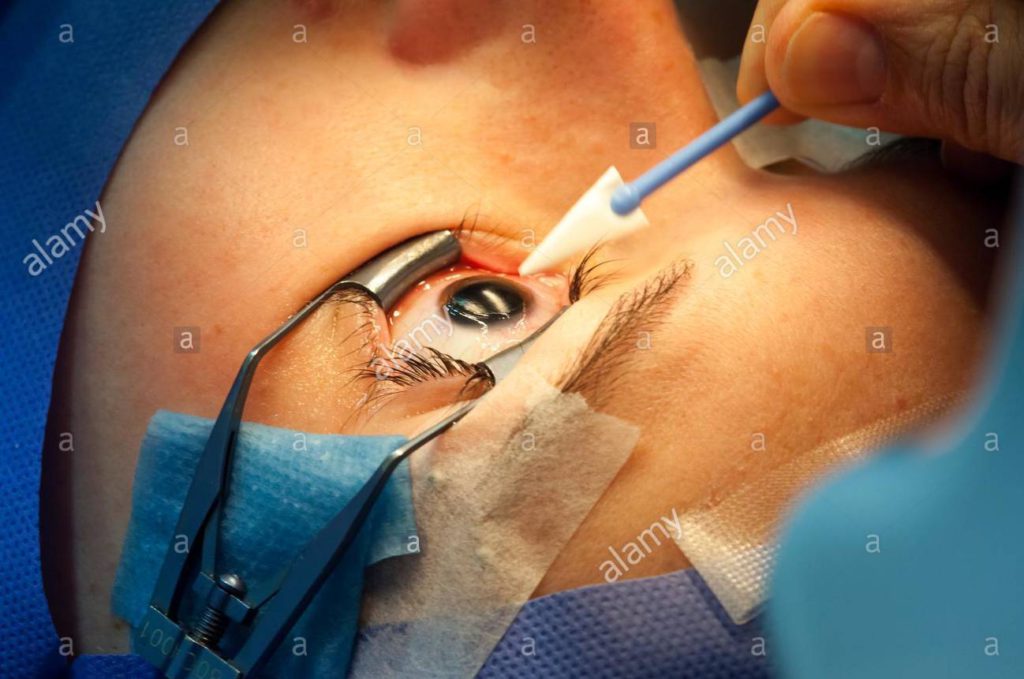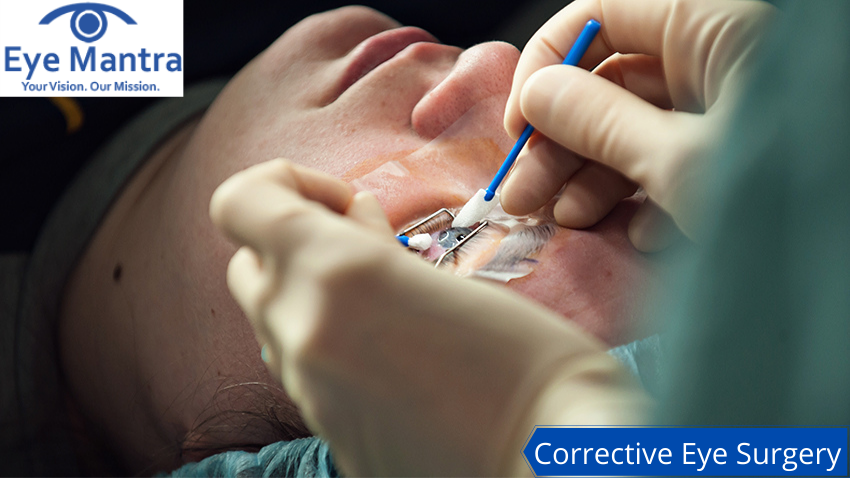Contents
Corrective Eye Surgery
Corrective eye surgery is a surgical procedure to restore normal vision by removing corneal irregularities. This kind of surgery is used for the treatment of refractive errors.
Light rays enter the eye and fall on the lens and cornea before falling on the retina when the corneal shape is normal, then the produced image is clear but when there is a corneal abnormality then the light doesn’t fall properly on the retina, thus producing an unclear image. This is called a refractive error. Some examples of refractive errors are farsightedness, astigmatism, and near-sightedness.
Evolution of Corrective Eye Surgery
The different kinds of refractive errors are:
- Myopia: When objects which are at a distance appear to be blurry.
- Hyperopia: When objects which are closer appear blurry.
- Presbyopia: It is a type of Hyperopia that affects older people.
- Astigmatism: In this type of refractive error, the eye’s shape is not spherical which causes the light to reflect poorly.
In the 1950s the refractive errors could only be treated by wearing glasses. Slowly contact lenses became popular which were followed by small surgical operations using microkeratomes and blades were used to correct refractive errors. There are many types of corrective eye surgeries, which are mentioned further in the article.
Types of Corrective Eye Surgeries

Traditional LASIK
LASIK is a type of surgery which involves the use of laser-based eye procedure to treat eye abnormality. LASIK can be performed in one or both eyes. Before the procedure, the patients get eye drops to numb their eyes. The patient sits on the chair and a device is put on the eye of the person to keep their eyes open. You will be asked to look at a point when the microkeratome opens a flap in your cornea and the laser reaches your eye and reshapes it.
The laser will reshape the cornea based on your prescription thus making the light refract clearly on the retina. At the end of the procedure, the flap will be replaced over the eye. A special type of contact lens is then placed on the eye which acts as a bandage. You are advised to rest for a while after the procedure. There is an improvement in the visual acuity by the end of the day or the next day. You are recommended to take a few days off from your work if you handle heavy machinery. You get a 20/ 40 vision after this procedure.
LASIK has some side effects too, such as:
- Blurry vision
- Haloes
- Glares around the lights
- Night blindness
- Dry eyes
- Pain
- Discomfort
Bladeless LASIK
In this procedure, the flap made in the cornea is done with a second laser. Healing time and visual acuity is improved because lasers are used. For some surgeons using a second laser is an inconvenience because they might have to shift from one room to another during the procedure. This can be time consuming and inconvenient at times.
Wavefront LASIK
In this procedure, wavefront technology is used to map the full surface of the cornea and lens. Instead of a prescription to guide the laser a topographical map is used to guide the laser precisely removing any chances of inconsistencies. Vision is slightly improved in comparison to traditional LASIK surgery. It gives a 20/20 vision.
Epi-LASIK
In this procedure, an epi-keratome blade is used to create a flap in the cornea. This blade creates the thinnest possible flap in the corneal tissue and reduces the healing time.
LASEK
LASEK (Laser epithelial keratomileusis) is a procedure that is similar to LASIK. During this procedure, the epithelium over the eye is detached in the form of a flap using an alcohol solution which during the procedure is folded. At the end of the procedure, the flap is replaced.
Photorefractive Keratotomy (PRK)
PRK surgery is commonly carried out in an outpatient surgery centre. The course of action takes about 15 minutes, usually. The process is as follows:
- Your eye will be locally anesthetized using eye drops.
- An eyelid holder will be placed on your eye to prevent you from blinking.
- Then the outer layer of cells on your cornea, called the epithelium, will be removed. To do this, a special brush, blade, laser, or alcohol solution may be used.
- You will be asked to stare at a point of light so that the eyes do not move.
- Now, the laser is used to transfigure the cornea. The laser comes from a special instrument that has been programmed with measurements for your eye.
Conditions under which PRK cannot be used include:
- Unstable refractive errors
- Glaucoma
- Cataracts
- People with diabetes
- In the case of a pregnant woman
- Chronic eye infections
Radial Keratotomy (RK)
This procedure was developed before PRK. It is a very uncommon procedure that does not use any laser at all and is rarely recommended by the doctor. This procedure works for people with myopia. Small cuts are made on the surface to flatten the eye and change how the light is refracted in the eye.
Side effects associated with RK surgery are:
- Glares around lights
- Fluctuating vision
- Light sensitivity
Conductive Keratoplasty (CK)
Conductive keratoplasty is a good option for old people with changing refractive errors. The procedure uses a thermal or radiofrequency to change the shape of your cornea rather than a laser. The heat changes the curvature of the cornea and helps light to focus on the retina.
If you need a laser or microkeratome surgery, then you must:
- Be above 18 years for treating myopia or hyperopia and above 21 years to treat astigmatism.
- Have hyperopia of fewer than +6 diopters
- You should not be pregnant
- Not have any additional health problems
- Not have any other eye problems.
How To Choose The Best Corrective Surgery For You?
The type of corrective eye surgery that is meant for you will be recommended by your eye doctor. If you have any difficulty in viewing objects, then contact your eye doctor for suggestions.
Corrective eye surgeries are used to treat different refractive errors and other eye problems for adults. The right surgery will be recommended by the doctor.
To get your eye examined or surgery performed by well trained and experienced ophthalmologist book an appointment at our eye care center- Eye mantra Care. Ph: +91-9711115191



